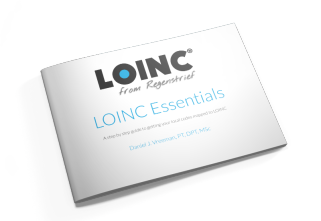At the close of the session, the Committee asked us for advice on what they might recommend to HHS about the contemporary landscape of health vocabularies and terminologies. Here are my three key recommendations.

HHS should bolster its funding and support for developing and enhancing biomedical vocabulary standards as their adoption and importance scales.
Clinical vocabulary standards are essential infrastructure that can unleash innovation, efficiency, and quality improvements in healthcare delivery and scientific research. These key infrastructure components need solid and sustained support as more and more of our processes and systems depend on them.
As a thought exercise, just think about the last time your internet connection went down.
In 2000, NCVHS recommended that the HHS Secretary should:
Provide immediate funding to accelerate the development and promote early adoption of PMRI standards.
The NLM has been a stalwart supporter of such vocabulary standards, and this absolutely must continue. Without continued investment in this growth phase, we not only risk losing the current progress, but also put the anticipated advancements from health data science and precision medicine in jeopardy.
HHS should incentivize and promote adoption of standards by data producers – as far upstream as possible.
When upstream producers standardize, everyone downstream (office practices, HIEs, public health, research networks, etc) all benefit. We’re starting to see the fruit of this effort in areas like lab test data.
Through the efforts of federal agencies and SDOs, together with test manufacturers who have through consensus developed a specification called LIVD for publishing the specific (small) set of LOINC codes appropriate for the measures their test produces. Having LOINC codes identified upstream at the lab test instrument/kit will be a massive leap for interoperability as it dramatically improves the efficiency and consistency with which labs can implement LOINC. And everyone downstream benefits.
There are other big opportunities where this same principle can be applied. For example, wearables, home devices, and patient reported outcomes are becoming important data producers.
HHS should remember that not all juice is worth the squeeze.
Not everything needs to be standardized, and not all at once. HHS should focus the standardization effort on the areas where it has the potential to the most value to the health system. We can apply 80/20 analyses in a few ways.
At one level, we can think about the key clinical domains or types of data most ripe for standardization. Where would it provide high value to standardize? The ONC has applied this approach by identifying priority data domains in its Shared Nationwide Interoperability Roadmap.
But, in some cases we have chosen areas for standardization that require clinicians (esp primary care providers) to collect more and different data than they are already doing. I think we’ve taken our eye off the ball. We’ve been a bit too aspirational, and overlooked some easy wins. Ask primary care physicians what external data about their patients they want but are missing, and many would say: labs, radiology, and medications. With meaningful use, we’ve made progress on lab (results) and meds, but I lament that we haven’t yet declared a national standard for radiology procedure names despite evidence of LOINC being a mature and capable standard for this domain and a strong partnership with the Radiological Society of North America.
Even after selecting priority data domains, we would do well to think about ways to standardize incrementally and gracefully. The long tail of infrequently used concepts are the most expensive to standardize.

